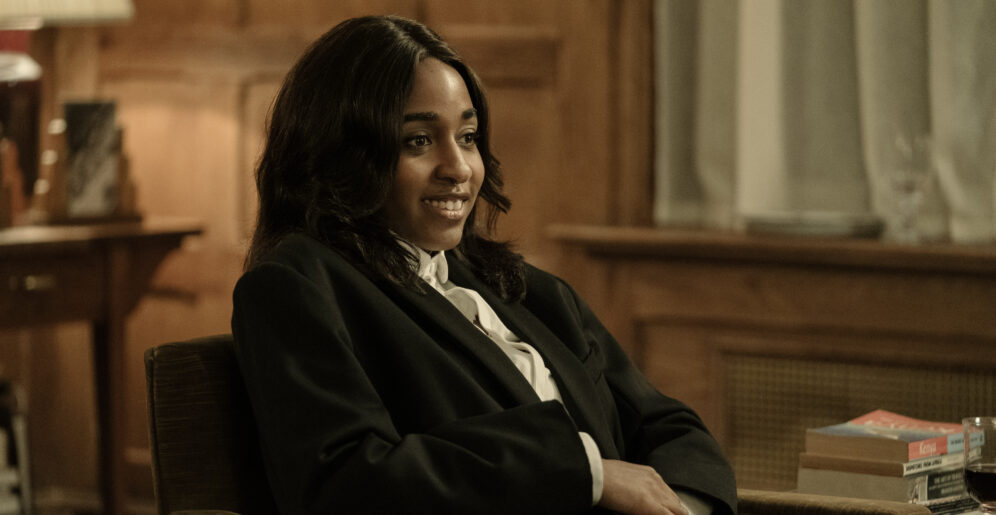
Music
Visionary Malik Hassan Sayeed Breaks Down His Historic Belly Cinematography, Luca Guadagnino’s After The Hunt, and Returning To Film
Malik Hassan Sayeed is responsible for visually capturing some of the most remarkable scenes of Black life in cinematic history. From the notoriously referenced dreamy cobalt blue stills of rappers DMX and Nas in the 1998 film Belly to Beyoncé’s Lemonade and Lauryn Hill’s “Ex Factor” music video, Sayeed’s eye against a film camera’s lens is a proven game-winning shot every time. “The time Hype Williams and I got to Belly, we were sort of in a flow state,” Malik Sayeed recounts to me. “A culmination of many years working together to that point, we just put together a lot of what we learned and what we hadn’t done, and we discovered a lot of times we’re looking for a happy accident. We’re hunters of a happy accident.”
In his early life, Sayeed first became enamoured with cinema after his mom took him to see Jimmy Cliff and Perry Henzell’s The Harder They Come 1972 film in theatres. “These are seminal films and incredibly important films for us. That was the first one that I saw where the photography showed me about how does the visual make you feel? The idea that the visual can elicit a visceral emotion and feeling.” Trent Reznor and Atticus Ross explore that visceral feeling more throughout the soundtrack of After The Hunt. The duo playfully clash moments of tense emotion with classical, Brazilian jazz, and soul music to move the viewer against the serene visualization of Sayeed’s camera direction. “Luca made some incredible choices in terms of music,” Sayeed adds. The tension is always being pulled from every direction when the artistic elements at play are at times in harmony and others in complete, orchestrated disarray.
Luca Guadagnino’s After The Hunt is Malik Hassan Sayeed’s first return to feature film work in 25 years. “If you go to Luca’s house, it’s amazing. The choices are incredible,” Sayeed says while laughing over Zoom. The masterful visionary has served as the director of photography for a slew of Spike Lee joints and has worked in camera units for Stanley Kubrick and a ton more. His aestheticized eye gives form to the way a director’s storytelling takes shape on a live set. Even though Sayeed emphasizes the importance of camera choice, he really gravitates towards the composition created by the particularity of a camera lens. “We shot After The Hunt on Kodak film with ARRI’s camera systems,” he begins to break down his filmmaking process with Luca Guadagnino who has been trying to get him to return to a film set for years. “I think more of what affects the look is the lensing. The whole process of film stock emulsion we choose… we have to test.”
Sayeed describes the technical procedures he takes before he even walks onto the set. The main reason he returned to moviemaking was that Luca’s After The Hunt took place at Yale. “I was excited to be in the academic space. I have a desire to go back to school and be in that space. I just love the idea of being in an environment where all you’re meant to do is learn and grow.” True to form, Malik Sayeed will be hosting a “Light, Lens, and Motion: Masterclass” at his alma mater, Howard University, later this fall.
Finely-textured shots and close-up framing dictate most of the emotional frequency in Luca Guadagnino’s latest project. From dolly shots of classroom activity to behind-the-wall staging of secret chats to direct examinations of physical affections shared between characters, Malik Hassan Sayeed finds inspiration and meaning in it all. The exactitude and precision of some of the shared scenes between Julia Roberts and Ayo Edebiri are difficult to put together without exceptional camera grips. Scenes of isolation capture Maggie (Ayo Edebiri), the film stock illuminates the darkness of her skin while conveying a glimmer of intensity in her wide pupils. “Luca doesn’t conform to Orthodoxy. He doesn’t want to repeat himself. We reference the past, but he also doesn’t want to recreate it,” Sayeed reminds me. “We’re influenced by it. He only shoots film, and he wants to honor the truth of the moment based on how he’s feeling and the way we’re feeling in reaction to the performance. So we rehearse and react. Luca is an editor, so he’s editing as he shoots. He’s not covering the scene.”
The cinematographer constantly adds new tools to his kit of cameras (even if they are decades old). He has a storage of cinematic mechanics that is history to him. In between projects, he is studying different formats of film cameras outside of the United States. Sayeed absorbs archival film camera technologies to stay on top of preserving the art form. “For After The Hunt, I wound up using an old Canon lens called the Canon K35. They were made in 1976 as a response to Germany’s Zeiss Super Speed set. These Canon lenses are a little warmer and have a very beautiful bouquet and softness inherent in the lenses.”
In the digital age, newer camera formats are completely transforming the way filmmakers create, and defenders of classic works shot on film like Malik Hassan Sayeed are pushing for ways to nostalgically cultivate and protect this authentic form of filmmaking. “It’s so calming and refreshing to see Luca only shoot on film,” Sayeed shows gratitude. “It’s the space. This is where I started and spent most of my time. There was no other normal for me coming up in film. We shot film, period. There was nothing else. Digital is an emulation. Everything in digital is basically emulating what film does, so it’s very refreshing to be back in the photochemical space. Even drone shots we did on the piece, we shot on film.”
Get The Latest
Signup for the AFROPUNK newsletter